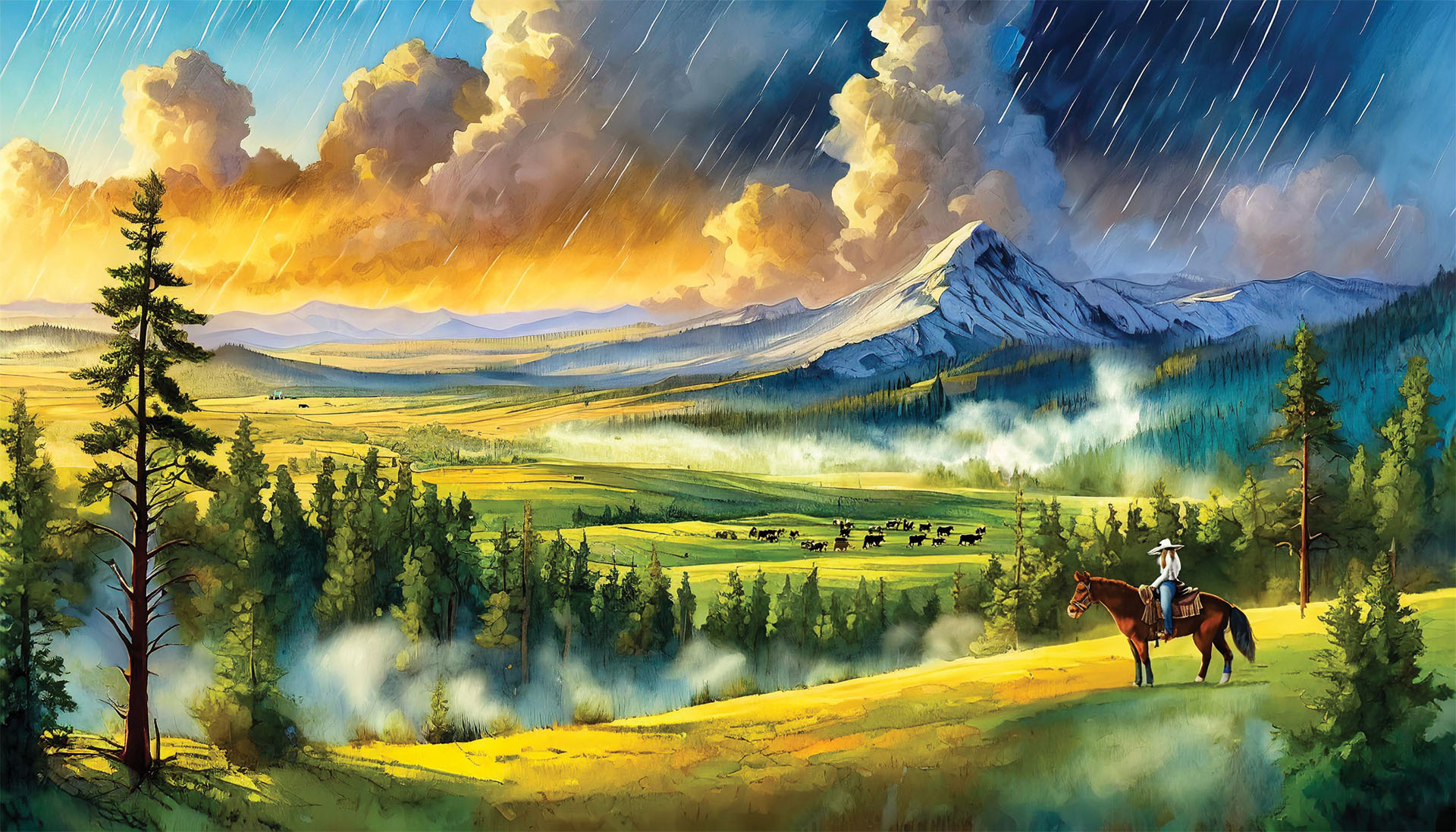Landowner. Rainmaker.
You can
grow water
Landowners are in the business, whether formally or not, of growing things—food, trees, grass, animals, biodiversity. To that list you can also add water, especially in the West. Yes, you can “grow” water, though “cultivate” would be a better word. And it’s not really you cultivating the water, it’s your land.
We tend to think of life needing water to thrive, which is true, but water also needs life, the living infrastructure of soil, vegetation and animals to hold it and move it around. This is the central insight of the late Spanish meteorologist Millan Millan. In the mid-1990s, Millan was asked by the European Commission to determine why summer storms in the inland mountains along Spain’s Mediterranean coast were disappearing, with rivers and farms drying up in their wake. The cause, he discovered, was damage to the land. Deforestation, coupled with intense development of the coasts, had slowly unraveled the inland water cycles. The water was still there, a Mediterranean Sea’s worth. And every day in summer, moist breezes blew from it, but the land was so stripped of life it couldn’t provide the “trigger” needed to precipitate the storms nor the soil to hold the water gained. And now the two failures are in feedback, one amplifying the other, phase-shifting to desert.
Though a practical scientist steeped in engineering, Millan describes what he saw with something resembling a poem: “Water begets water, soil is the womb, vegetation the midwife.” It was from Millan that I first heard the notion of cultivating storms, or of landscapes “milking” water from the atmosphere. But such capability shouldn’t surprise any of us. Life wants to live and has had millions of years to figure out how to keep itself and its surroundings properly hydrated.
Anchoring it all is soil, the womb. Picture soil as a sponge, held together but full of tiny cavities. There are grains of sand, clay and minerals within that matrix, but what binds them into a sponge is life, an astounding plethora of the invisible and nearly invisible: protists and bacteria, nematodes and soil mites, and up to eight miles per square inch of fungal hyphae. It is their exudates and decaying bodies which not only glue the particles together but hold them apart, making room for the water so crucial to life, while also providing a porous filter for water to seep through for deeper storage and clean year-round spring flows.
Vegetation is the midwife because it delivers the water to the atmosphere as vapor, where it rises, condenses and joins with other moisture to precipitate rain. But vegetation doesn’t only send up water vapor—it also delivers the seeds of future rain drops, called cloud condensation nuclei. These are microscopic grains of various bacteria, fungal spores, and chemical aerosols (tree smell!) all of which have uniquely low freeze thresholds, hastening condensation from vapor to ice to water, and thus its subsequent return to land as rain or snow.

Vegetation
doesn’t only send
up water vapor,
it also delivers theseeds of future
raindrops.
Though your contribution to the rain might not fall back on your land directly, it may fall upslope in the watershed, draining down into your aquifers, seeping into your springs and feeding your streams: all of which your deep-rooting native trees and grasses, and the frogs, birds, deer and cows, will appreciate. If nothing else, you will be watering the land of your neighbors, who will water the land of theirs, and around the water cycle goes, growing more life, drawing more water into the system. Water begetting water.
How to steward such a system, or your piece of it? Perhaps the place to start is by asking the land. Wander it with your senses tuned to water. Where is it moist, and where is it dry? Where is water rushing away when it rains? How might you hold it? Dig around in your soils. Are they dark and clumpy, or pale and sandy. How is the vegetation doing there? Chances are your land has been altered from its original state by logging, grazing, plowing or other historical use. Look for signs, or remnants, of what it was like centuries ago. Whatever you have in the way of aboriginal ecosystems might be your biggest asset, for such life has evolved for the local climate and learned to flourish in it, which foremost involves getting and holding moisture.
It’s kind of a shame you can’t see water vapor. If you could, your trees and shrubs would appear as fountains, your fields as uprising lakes of mist, all feeding moisture and cloud-seeds to the sky.
At the same time, over bare land or man-made structures, you’d see the opposite, heat rising, pushing the moisture away. Your land and the atmosphere have a lively relationship. They depend on each other, and there you are, ready to play matchmaker.
Sorry, the comment form is closed at this time.






Reyes Garcia
Thank you for this brilliant, beautiful and uplifting essay, which reminds me of my love for my daughters! After teaching Environmental Ethics for 30 years and becoming more and more despairing, what you have written spurs hope in me.
Carl Struck
Beautifully written and so important for us all to internalize. We all can do our part to help revegetate our landscapes and pass on the gift of life…water! Thank you!